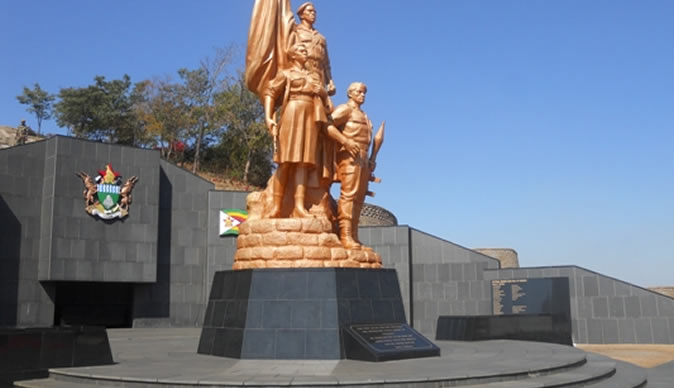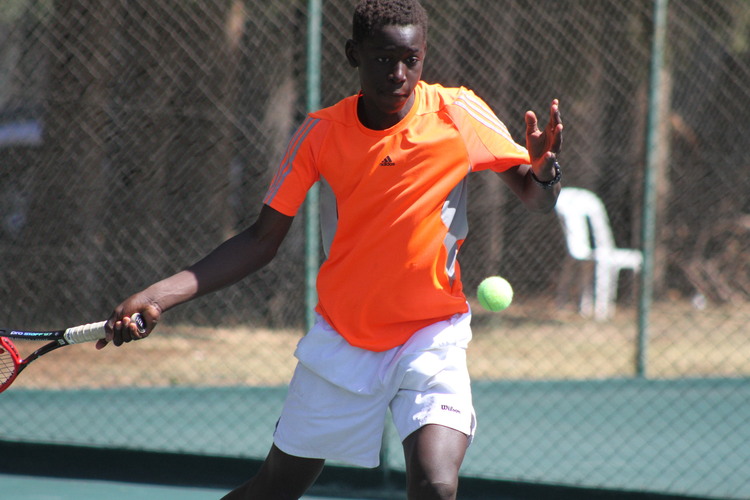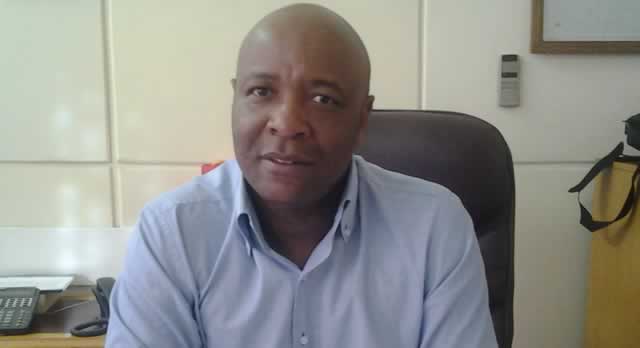National heroes and Tomb of the Unknown Soldier


The Tomb of the Unknown Soldier represents the heroism of Zimbabweans who died to free this country from colonial bondage, whose bodies were never found
Sekai Nzenza on Wednesday
Long before independence, when this country was called Rhodesia, the first Monday in July was Rhodes’ and Founders’ Day, to honour Cecil John Rhodes’ birthday which was July 5.
Cecil John Rhodes was one of the greatest empire builders who named this country Rhodesia, after himself. The following day was called Founders’ Day. This holiday period was designated back in 1895, when the British South Africa Company colonised our country and appropriated the land and minerals for their own use.
Zimbabwe’s Independence that was first celebrated in 1980, put an end to that Rhodesian colonial era and its holidays. Zimbabweans celebrated Heroes’ Day on Monday August 14 and Defence Forces Day on Tuesday August 15.
These are public holidays marked with military parades that take place in Harare. The Zimbabwe Defence Forces (ZDF) was established in 1980 and comprises the Zimbabwe National Army and the Air Force of Zimbabwe.
There was a time when these important days in our history did not register in my mind at all. The only Heroes’ Acre I had visited in the past was Chinyamungororo, situated within a walking distance of my village. I first went to Chinyamungororo as a tourist more than 20 years ago, accompanied by some American friends.
At that time, I was living in the Diaspora and visiting my village. At the same time, I was proudly showing my friends some interesting places. I did not spend enough time at Chinyamungororo Heroes’ Acre in order to feel and comprehend the meaning of fallen heroes.
During that time, I was in another head space. This sense of disconnection from your past happens, especially when you have live in a different culture for a very long time, like I had done.
In fact, I knew a lot more about the fallen heroes and the tombs of Unknown Soldiers tombs in other countries other than my own. Some years ago, I was in Fremantle, Australia. I recall walking to The Fremantle War Memorial Monument Hill.
I stood there, looking at the names of the soldiers who died at Gallipoli and felt deeply sorry for their mothers, fathers and families, who must have sorely missed them when they died in Turkey and other places.
I also knew that in India, there is a place called Amar Juwan Jyoti, meaning the flame of the immortal soldier.
This marks the Tomb of the Unknown Soldier. The shrine is built with black marble and there is a rifle and a soldier’s helmet placed on it. Once a year, The Prime Minister of India goes to pay homage and remember those who died fighting for the freedom of India.
Like us, the Indians also suffered from British colonial rule. The British ruled India between 1848 and 1957, the longest time the Queen of England controlled a continent.
This means the British were in India for 200 years, over a hundred years more than they colonised us. When I was in the USA in 2008, I visited Arlington National Cemetery, Virginia. I spent a few minutes looking at the Tomb of the Unknown, which is dedicated to US soldiers who died in past wars and their remains were never found. I had this feeling of empathy and sadness for the dead.
I took pictures, as tourist do, and silently made a little prayer remembering the fallen heroes of America, among them, no doubt, were my African American brothers and sisters.
The monument of the Unknown Soldier’s tomb brought a sense of sadness and questions as to why there are wars in the world. But that sadness quickly passed, once I realised that I was just a tourist and wars happen the whole world over.
Years later, when I returned home, back to Zimbabwe, I went to the National Heroes’ Acre in 2011, not as a tourist, but as a Zimbabwean driven by a desire to understand a significant past that I had earlier neglected.
The National Heroes’ Acre was built in order to honour many Zimbabweans who died inside and outside the country during the struggle against Ian Smith’s colonialist Rhodesian Front.
This important monument represents Zimbabwe’s struggle for Independence ; a struggle that began during the First Chimurenga when the British came. Then the Second Chimurenga was fought and the bravery of our brothers and sisters led to Independence in 1980.
The National Heroes’ Acre was built in September 1981, one year after we won our independence. Ten Zimbabwean architects worked alongside seven North Korean architects.
They were joined by several Zimbabweans, who worked hard using black granite from Mutoko to construct this significant heritage. The National Heroes’ Acre can be seen from many angles of Harare, towering above Warren Hills.
When you visit National Heroes’ Acre, you will be immediately drawn to the majestic towering monument of the Tomb of the Unknown Soldier. The shrine represents the heroism of tens and thousands of Zimbabweans who died to free this country.
Their bodies were never found. Today, their remains lie scattered in valleys, caves, disused mines, shallow and deep graves and many other unknown mass graves in Zimbabwe. The Tomb of the Unknown Soldier includes a bronze statue of one female, two males, a flagpole and an ornate artifice.
Above it is the Eternal Flame, which was lit at Independence Day celebrations in 1982. The Eternal Flame, moto usingadzime, represents the spirit of Zimbabwean independence.
On either side of the monument are walls showing the history of Zimbabwe, beginning from the pre-colonial times and the Chimurenga Wars, up to Independence Day when President Robert Mugabe took over.
As you enter Heroes’ Acre, you will also see a museum showing the history of the struggle against colonial rule. Here you will also find many artefacts, photographs and information on the war for Independence.
There are many heroes’ acres across Zimbabwe. Chinyamungororo Heroes’ Acre is one other shrine, which is administered by the Department of Museums and National Monuments.
We stopped at Chinyamungororo on Sunday last week, towards sunset, a day before the Heroes’ celebrations. My cousin Reuben said this was the best time to visit Chinyamungororo, to take a walk and view the graves, including the one of the Unknown Soldier.
Chinyamungororo is a massive granite pillar jutting into the sky, emerging from a hill outcrop. From our village, we can see this imposing granite that looks like the Eastern Highlands’ Mahwemasimike.
When we were growing up, my grandmother Mbuya VaMandirowesa said that Chinyamungororo was a sacred place. Our ancestors used to go there and perform rituals, asking for rain or celebrating the harvest.
There are hidden caves and passageways under the Chinyamungororo hills. Chiefs are buried there too. Some people say there are some ancient rock paintings and spring well with water that never runs dry.
Chinyamungororo stands high up and it is always the first to receive the sunrise. Towards evening, when the sun sits on Chinyamungororo in the cold season, we know that darkness is near.
There was a time we used to go around looking for mazhanje, the sweet juicy wild fruits that you collect in the rainy season and Mbuya said if we go to Chinyamungororo, we should collect the mazhanje without talking.
These fruits had been placed there by Mwari, Varikumusoroso, and God in the Highest. Mbuya VaMandirowesa pointed to Chinyamungororo and said, dzokai pano ziva risati ragara Chinyamungororo. You must return home before the sun sits on Chinyamungororo.
Since we did not have a watch, Chinyamungororo and the sun helped us to tell the time. Chinyamungororo was sacred hill, that was our marker of time. These days, some Mapositori, people of the Apostolic Faith, go to the sacred place at Chinyamungororo to pray in the caves and fetch water from the spring well.
My uncle, Babamunini Ruka, who is about 80 years old, said the Mapositiori are desecrating the place by going to pray at Chinyamungororo. This means they are also dishonouring the heroes who are buried there.
Instead of receiving blessings from God by worshipping at Chinyamungororo, the Mapositori might end up with bad luck.
Chinyamungororo was an ancestral sacred place long before the heroes were buried there. The imposing granite is both peaceful and menacing. At times it gives an eerie feeling of the secrets that lie within its caves.
At Chinyamungororo, we hope to collect the narratives of those who died and support the development of a museum of this sacred place, so future generations will know that we have a national heritage full of valuable memories of the past.
On National Heroes’ Day, we honour the fallen heroes at various shrines across the country.
We also celebrate our heroic heritage, the ancestral land and the beauty bestowed on this country called Zimbabwe.
- Dr Sekai Nzenza is a writer and cultural critic.










Comments